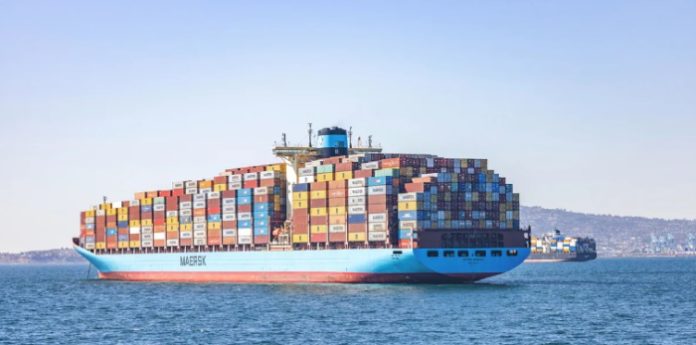
-
Maersk surpasses second-quarter 2022 forecasts with revenue rising to US$21.7 billion as port congestion continues to keep freight rates high
-
Underlying EBITDA reached US$10.3 billion and underlying EBIT was US$8.9 billion
-
Amid exceptional market situation, Maersk revised up its full-year 2022 guidance to underlying EBITDA at US$37 billion and underlying EBIT at around US$31 billion
Danish shipping giant A.P. Moller-Maersk announced on August 2 its financial performance for the second quarter of 2022 surpassed its forecasts, with recognized revenue of US$21.7 billion as continuing congestion kept freight rates high longer than expected.
Underlying earnings before interest, tax and debt amortization (EBITDA) reached US$10.3 billion and underlying EBIT was US$8.9 billion, Maersk said.
The strong results stem from the continuation of the exceptional market situation within the Ocean segment, said Copenhagen-headquartered Maersk, the second-largest global container shipping company.
Congestion in global supply chains have sent container freight rates soaring to historic levels over the past few months as congestion in US West Coast and European ports prolonged waiting times for ships to dock.
With the container rates still high, the favorable conditions for liners looks likely to stay longer than initially expected, prompting Maersk to consequently revise upward its full-year guidance for 2022.
Following the revision, underlying EBITDA is now expected to be around US$37 billion (changed from around US$30 billion previously) and underlying EBIT forecast to be around US$31 billion (up from around US$24 billion previously), Maersk .
Free cash flow (FCF) for the full-year 2022 is now expected to be above US$24 billion (previously above US$19 billion), while the cumulative capex guidance for 2022-23 is unchanged of US$9-10 billion.
Maersk said the 2022 guidance is currently based on a gradual normalization in Ocean activity taking place in the fourth quarter of 2022.
The company said it will publish its second-quarter results on August 3.
The Russian invasion of Ukraine on February 24 this year that led to western sanctions against Moscow and prolonged lockdowns in Shanghai and other key ports of China amid a new wave of COVID-19 infections caused further supply chain disruptions.
Even before the Ukraine conflict, congestions in the US and European ports had already sent container shipping rates rising to historic highs.
Drewry’s composite World Container Index climbed to a peak of US$10,377 in September 2021 when long queues of ships waiting to unload Christmas season imports from Asia at US ports lengthened as the Ports of Los Angeles and Long Beach could not cope with the deluge of containers arriving.
Hopes for the congestion to vanish after the holiday season melted, however. The two US West Coast gateways successfully cut vessel dock dwell times to reduce the number of vessels waiting outside the ports from 109 per day last October to 23 in July.
However, industry observers say port congestion is growing in ports on the US East Coast as some vessels avoiding the West Coast congestion shift east.
Weakening demand for products as manufacturers and consumers alike reel from high inflation caused by costly oil and fuel prices is softening container rates.
On July 29, Drewry said the WCI for the past week showed rates declining 0.9% to US$6,761.63 for 40-foot containers, the 22nd consecutive weekly decrease, and indicating a 28% drop from the same week last year. Nevertheless, it remains 89% higher than the 5-year average of US$3,574.




